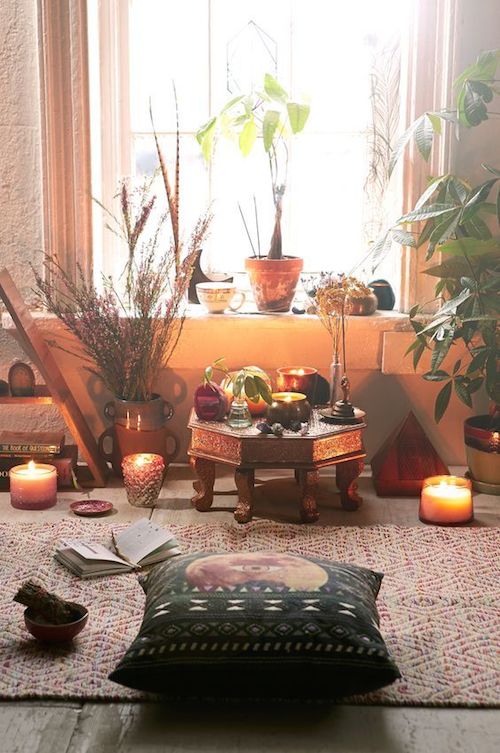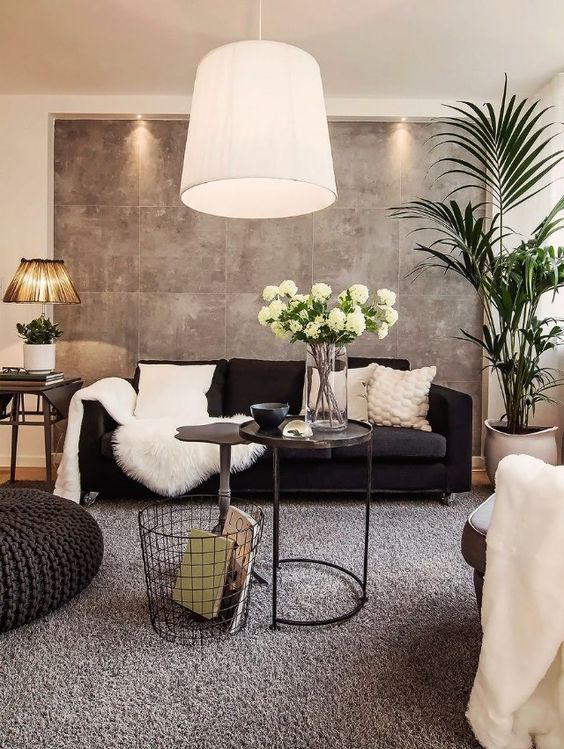Design Harmony: How to Create Harmony in a Space

When we talk about design harmony, we’re talking about a fundamental principle of design and properly managing the energy of a room to create a pleasant space that feels cozy.
When you consider design harmony in your decor, you’ll feel like you’re walking into a temple every time you enter your house. Everything is in its place and just the way you like it. The furniture is distributed in an easy and comfortable way. Lighting is how it should be, not harsh or dark. There should be a balance in the overall decoration.
Design harmony is to be able to lay on the sofa with tea and a blanket and to know that your space is in perfect order.
To achieve this design harmony, you need to be aware of the position of the furniture, lighting, and decoration so that it is comfortable for you and your guests.

Also, it’s important that there is a balance of chromatic ranges, textures, shapes, and adequate lighting. All these elements are part of a whole that combine and complement each other. Otherwise, individually they would not have the desired harmonious effect.
To create the desired design harmony, you need to take several aspects into account.
The reality of your space
You should be aware of your space. Depending on how much room you have, you’ll need to choose elements for optimal functionality and adapt the decoration based on the area you have.
Consider the space to create design harmony
It’s necessary to create a balance that corresponds to the space. Consider your priorities and how to work them into the space and discover new ideas.
Lighting with harmony
Lighting makes a big difference in the way you perceive a space. The idea is to have natural light and consider this while placing furniture, colors, and objects. We recommend looking for lighting that makes you feel comfortable. Strong artificial lights can overpower a space and create the opposite effect of what you’re looking for.
If you control the light, you can create a different feeling in the room depending on the situation.

Avoid overcrowding
It’s important not to overcrowd a space and leave room to breathe. This can also give a space more depth and make it not feel as small.
We recommend considering this aspect since it will directly influence the aesthetic you hope to achieve.
Therefore, you can opt for a minimalist decoration, which is perfect for small spaces. This will help you avoid overcrowding a small room.
Balance of objects
You can create balance by properly distributing objects throughout the room.
Therefore, to achieve balance, you’ll also need to manage empty areas. When considering where to place your furniture, consider the distribution of unoccupied space so that it looks beautiful and it’s comfortable to move around in the room.
The balance of elements is important. In addition to furniture placement, also consider combining and contrasting shapes, colors, and textures. The contrast enriches the design and makes it more interesting. This is another principle of interior design that is very important to take into account when making decorative combinations.
Textures
You should avoid decorating your whole house with the same materials, fabrics, or colors. This can create the sensation of being a cold and monotonous place. We recommend using a mixture of textures to give personality and style to your home.
Combine natural fabric textiles, different patterns, plants, wooden features, and accessories with your furniture. All of this help give the room more personality and depth.
The combination of similar features with different pops creates a unique design harmony in the decoration. You create a rhythm with some repetition, whether through colors, lines, or shapes, and then also add variety to break up the monotony.

As we’ve seen, design harmony is created by considering space, shapes, lighting, colors, and textures in a way that they create balance.
However, this doesn’t mean that every room in your house should have the same layout. You want some differentiation between rooms, but a general aesthetic that creates the same character throughout your house.
One way to see if your house has design harmony is to see if your guests are comfortable in your rooms without effort. There should be small visual clues that create delineation of spaces. Therefore, you can create a clear orientation that offers a logical and harmonious space.
When we talk about design harmony, we’re talking about a fundamental principle of design and properly managing the energy of a room to create a pleasant space that feels cozy.
When you consider design harmony in your decor, you’ll feel like you’re walking into a temple every time you enter your house. Everything is in its place and just the way you like it. The furniture is distributed in an easy and comfortable way. Lighting is how it should be, not harsh or dark. There should be a balance in the overall decoration.
Design harmony is to be able to lay on the sofa with tea and a blanket and to know that your space is in perfect order.
To achieve this design harmony, you need to be aware of the position of the furniture, lighting, and decoration so that it is comfortable for you and your guests.

Also, it’s important that there is a balance of chromatic ranges, textures, shapes, and adequate lighting. All these elements are part of a whole that combine and complement each other. Otherwise, individually they would not have the desired harmonious effect.
To create the desired design harmony, you need to take several aspects into account.
The reality of your space
You should be aware of your space. Depending on how much room you have, you’ll need to choose elements for optimal functionality and adapt the decoration based on the area you have.
Consider the space to create design harmony
It’s necessary to create a balance that corresponds to the space. Consider your priorities and how to work them into the space and discover new ideas.
Lighting with harmony
Lighting makes a big difference in the way you perceive a space. The idea is to have natural light and consider this while placing furniture, colors, and objects. We recommend looking for lighting that makes you feel comfortable. Strong artificial lights can overpower a space and create the opposite effect of what you’re looking for.
If you control the light, you can create a different feeling in the room depending on the situation.

Avoid overcrowding
It’s important not to overcrowd a space and leave room to breathe. This can also give a space more depth and make it not feel as small.
We recommend considering this aspect since it will directly influence the aesthetic you hope to achieve.
Therefore, you can opt for a minimalist decoration, which is perfect for small spaces. This will help you avoid overcrowding a small room.
Balance of objects
You can create balance by properly distributing objects throughout the room.
Therefore, to achieve balance, you’ll also need to manage empty areas. When considering where to place your furniture, consider the distribution of unoccupied space so that it looks beautiful and it’s comfortable to move around in the room.
The balance of elements is important. In addition to furniture placement, also consider combining and contrasting shapes, colors, and textures. The contrast enriches the design and makes it more interesting. This is another principle of interior design that is very important to take into account when making decorative combinations.
Textures
You should avoid decorating your whole house with the same materials, fabrics, or colors. This can create the sensation of being a cold and monotonous place. We recommend using a mixture of textures to give personality and style to your home.
Combine natural fabric textiles, different patterns, plants, wooden features, and accessories with your furniture. All of this help give the room more personality and depth.
The combination of similar features with different pops creates a unique design harmony in the decoration. You create a rhythm with some repetition, whether through colors, lines, or shapes, and then also add variety to break up the monotony.

As we’ve seen, design harmony is created by considering space, shapes, lighting, colors, and textures in a way that they create balance.
However, this doesn’t mean that every room in your house should have the same layout. You want some differentiation between rooms, but a general aesthetic that creates the same character throughout your house.
One way to see if your house has design harmony is to see if your guests are comfortable in your rooms without effort. There should be small visual clues that create delineation of spaces. Therefore, you can create a clear orientation that offers a logical and harmonious space.
All cited sources were thoroughly reviewed by our team to ensure their quality, reliability, currency, and validity. The bibliography of this article was considered reliable and of academic or scientific accuracy.
https://midecoracion.com/casas/como-conseguir-armonia-en-un-espacio/







